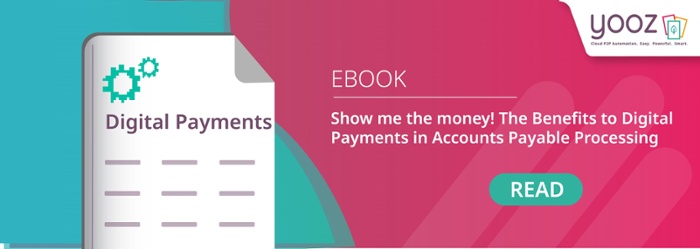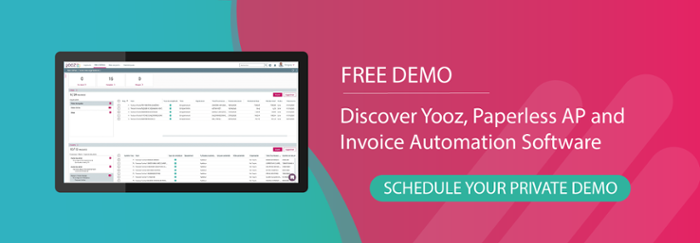In the beginning, there was cash. Business-to-consumer and business-to-business transactions have for millennia been based on coins (and later bills) as a trusted mechanism of stored value to settle purchases. However, over time, organizations and individuals have embraced new forms of payment to settle their invoices in a more efficient, reliable, and secure way, mainly paper checks. However, as technology has evolved so too has the way that we transfer payment funds.
While the majority of B2C transactions are still settled by cutting and mailing checks, a growing list of electronic payment options has evolved that take convenience and security to another level. That transition is to a large extent driven by payment automation which enables businesses to go paperless and digitize their entire accounts payable (AP) process.
Every company has at least one bank account, so it makes sense to use Automated Clearing House (ACH) payments to settle invoices without having to shuffle paper and unlocking several benefits for both parties to a transaction, particularly vendors waiting for their payment to arrive. These type of payments - electronic payments through the automated clearing house (ACH) network run by banks - ensures that vendors get paid faster and with fewer risks along the way.
Check Troubles: Why ACH Payments Make a Lot of Sense
Paper checks are plagued by significant drawbacks around areas such as security, time, cost, and traceability.
Of these security and specifically potential fraud is the biggest and most prominent downside. Consider that in 2021, two out of three treasury and finance professionals said that checks were the payment method most affected by fraud attempts. And these attempts can take many guises, from forged signatures to outright theft and counterfeiting.
Then there’s the time and cost factors. Sending a check with First-Class Mail may take anywhere from one to three business days. Total turnaround time for a typical invoice from the moment it is received from the vendor until a paper check arrives at the supplier can take up to a month. The time to process an invoice and deposit the check once the vendor finally receives it is another hidden cost. Such delays test everyone’s patience and squander good will.
Third, paper checks suffer from a lack of transparency and traceability that is no longer acceptable in an increasingly digital business world. Assume you are a vendor waiting for payment and want to know the status. After all, those payments represent a significant portion of your cash flow. Unfortunately, access to paper check information may not always be available and may also require additional employee labor to link information to accounting systems.
These are just some of the reasons why it makes sense to explore alternatives payments means.
How do ACH Payments Work?
All those shortcomings help to explain why ACH payments have gained in popularity, with a recent survey by the Association for Financial Professionals (AFP) revealing that 78% of organizations in the U.S. relying on them today for both credit and debit transactions.
But what is an ACH payment and what are the benefits of ACH payments for vendors and businesses?
ACH payments are an electronic form of payment that is pulled directly by a bank from a customer’s checking account and then deposited into the recipient’s account at their bank. At most banks, recipients will receive an automated alert once their account has been credited.
ACH payments require no printing, signatures, or postage and instead can be set up in a browser, banking app, or financial software if it’s connected to the merchant bank. All in all, going the ACH route is a clear improvement over paper checks, albeit with some limitations.

The Pros and Cons of ACH Payments
There are pros and cons to using any form of payment, including ACH payments. On the plus side, ACH payments:
- Are faster than paper check payments, allowing funds to typically be received within a week.
- Reduce costs per transaction
- Offer improved traceability and visibility compared to paper checks, thanks to electronic records.
However, settling invoices via ACH payments also comes with some real downsides:
- Businesses must give up a certain amount of control over their payments since using the ACH network requires them to provide sensitive bank information such as account and routing number.
- ACH payments are processed in batches, meaning they only happen at fixed daily intervals instead of in real-time. This approach adds precious time until a vendor gets paid, sometimes exceeding the due date and leading to an involuntary late payment.
- ACH transactions are irrevocable and irreversible after they settle, exposing a transaction to certain risks.
While rampant check fraud is well known, ACH payments also suffer from a fair amount of misuse. In an industry survey in 2022, more than a third of companies reported fraud attempts via ACH payments. In fact, ACH payments are the payment method with the second highest fraud activity, right behind paper checks.
Even with the above downsides, on balance, making the switch from paper checks to ACH payments is a clear step forward.
- Helps organizations save time and money,
- Cuts down on the errors, delays and exceptions that are inherent in paper checks.
- Keeps vendors happy since they no longer need to work the phones or write emails to track down the status of their invoices.
How ACH Payments Compare to ePayables
Which raises the question how ACH payments fit into the larger landscape of ePayables. You could call them an important transitional technology that is already being augmented and, to some extent, about to be replaced with more modern electronic payment methods.
While consumers already enjoy the comfort and security of electronic payments with the ease of a tap, fingerprint, or even just a glance, businesses are comparably just getting started embracing the latest digital payment options and making them part of their payment automation workflow. ACH payments are an important step in the right direction as they integrate vendors closer into a dynamic business network where both sides of a B2B transaction gain more visibility and security.
If funds are automatically pulled on one side and in turn deposited into the vendor’s account, lower cost and accelerated settlement speed are just the tip of the iceberg. All those bits of information that come with ACH payments are automatically fed into both parties’ accounting or financial software and will paint a more complete and timelier picture of the business. Management will be able to quickly identify:
- Are there continuous laggards that unnecessarily clog the AP pipeline?
- Are specific vendors always inquiring about their payments, causing extra detective work?
- On the vendor side, are there customers that are consistently late in paying invoices?
Those types of actionable insights can become the basis for ongoing conversations with partners and suppliers to smooth out the kinks in the accounts payable workflow, perhaps renegotiating payment terms or payment methods. The need to get paid on time could, for instance, prompt vendors to finally get on board with receiving ACH payments - and eventually becoming more curious about future ePayables options.
ACH as a Stepping Stone: What’s Next For Payment Automation?
The future of ePayables offers a vision of frictionless payment automation, a world in which vendors are paid on time every time, with close to zero mistakes, delays or exceptions. When an intelligent platform handles the entire workflow from generating a purchase order and processing invoices to scheduling electronic payment, recording every detail for an audit trail in the cloud, there’s little room left for error and waste.
We’re slowly getting there as paper checks are receding. Currently, about one in five organizations have adopted digital payments, but there’s plenty of room for improvement in how invoices are paid going forward. The need to go beyond checks and even ACH payments is particularly pressing given the challenges most businesses are facing going into 202. Wobbly supply chains, labor and material shortages, as well as continued inflationary pressures affect all vendors, making cost control and cash management crucial.
Virtual credit cards are one promising new payment technology that’s rapidly gaining traction, albeit starting from a small base. Close to one in three businesses are already testing these digital representations of credit cards which take traceability and security up a few notches.
That’s a far cry from the current popularity of ACH payments, but it’s a glimpse of where the journey in payment automation is going. Building an equally hands- and error-free workflow will take time but getting away from paper checks and embracing the benefits of ACH payments for vendors and customers is the first step on this journey.








